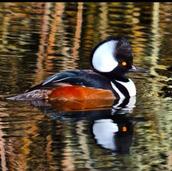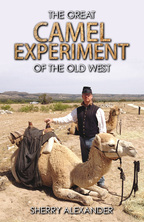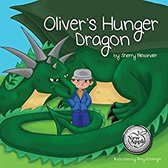
When Fall’s leaves turn yellow, orange, and red, it’s time to look to the skies as waves of birds pass overhead. Seabirds, geese, ducks, swans, crows, songbirds, and sandhill cranes are joining hundreds of species traveling south to breeding grounds and wintering habitats along the Pacific Flyway. The Pacific Flyway extends 4,000 miles from Alaska to South America and provides the essential food, water, and rest for the long journey. In a video created by the Cornell Lab of Ornithology, the importance of understanding what the birds need is the “. . . first step to understand is . . .what factors and threats that they're experiencing throughout the annual cycle” (“Voices of the Pacific Flyway - Youtube.” 5:10-5:27). Migration survival depends on available resources and the factors and threats that threaten those resources. However, without help those resources will disappear and so will the birds. Human intervention helps protect the Pacific Flyway for the thousands of migrating birds so they can survive the loss of habitat from agriculture expansion, the severe drought in the West, the lack of food, and the effects of the increased temperature, lack of water, and severe weather conditions because of climate change.
One way humans can help protect the Pacific Flyway is to understand that during the spring and fall, numerous songbirds, and almost all waterfowl, migrate because of changing weather conditions and to find food. An article by the Audubon Society found that “The birds of the Pacific Flyway depend on a diverse chain of habitats, from Arctic tundra and northwestern rainforest to tropical beaches and mangroves” (“Pacific Flyway”). While most of the flights occur at night, the birds need food and places to rest during the day, and while they rest they actually benefit people. A study by the US Fish and Wildlife agency on waterfowl stated that, “Migratory birds provide ecosystem benefits that include pest control, pollination of plants and serve as food sources for other wildlife” (“U.S. Fish Wildlife Service Waterfowl” ). Migration along the flyway helps both the birds and humans, yet without the support of concerned humans migration habitats will disappear and so will the birds and the benefits they bring to people.
However, before humans can help, it’s important to understand how agriculture and grazing are damaging habitats. According to U.S Fish and Wildlife, industrial agriculture takes up one- third of the earth’s surface, and the chemicals used to protect plants from pests make the streams and fields no longer habitable for migrating birds. A study completed by the Center for Biological Diversity concluded that “ . . . farming focused on livestock production is driving the extinction crisis [of birds] by eating up habitat wildlife need to survive.” Researchers also found that by 2050 agriculture expansion will be “... on pace to destroy more than 1.2 million square miles of natural habitat, an area roughly the size of India.” The loss of natural habitat is responsible for the disappearance of over three billion birds in North America since 1970 (“Flyways”). The graph below shows how the decline in drier habitats such as grasslands, forests, and shrub-steppes are declining, but some help also comes from the hands of caring organizations such as the Ridgefield Wildlife Refuge. The Refuge plants alfalfa, corn, barley, clover, ryegrass, and orchard grass in their fields for migrating birds and then allows grazing after the birds leave. The plantings provide habitat for geese and numerous species of migrating birds. Intervention, though, is also needed when drought threatens migration habitat.
In the same way that people are becoming aware that expanding agriculture and farming threatens habitat for migrating birds, the lack of water or a severe drought is recognized for its impact on habitats for both migrating waterfowl and species that prefer drier ground. It also impacts humans, and in some areas it has become a balancing act between water for people and water for birds. It’s no secret that the western United States is currently experiencing a deep drought. The National Oceanic and Atmospheric Administration (NOAA) map at the end of the paragraph shows the severity of drought in the west on August 3, 2021. The lack of rain and hotter temperatures decreases the amount of water available for migrating birds in lakes, wetlands, and streams. It also causes the use of water for irrigation to be cut off as it was recently done in Oregon’s Klamath Valley. With no water for fields, there was no water for birds. The same thing is happening throughout the flyway. Even California’s Sacramento Valley has seen habitat loss due to drought according to US Fish and Wildlife. It found, “... reduced seasonal flooding of wetlands and farm fields threatens a globally important stopover site for tens of thousands of migratory shorebirds in California's Sacramento Valley” (“U.S. Fish Wildlife Service Waterfowl - FWS.”). Without water, habitat is lost and so is the rich food source that migrating birds rely on for their journey. Washington’s Ridgefield Wildlife Refuge manages the effects of drought through the use of dikes, flooded fields, and a lake. The Carty Lake fills with water from the Columbia River during the spring when the river rises from melting snow packs, and provides spring and summer habitat. Lake levels lower in the summer months but rarely evaporates. Human intervention clears debris and repairs dikes to make sure flood water continues to enter the lake. This action saves wetland habitat from the effect of drought, but a lack of water in other areas means a scarce food supply for the rest of their journey south.
Not only can humans intervene to save essential habitat and water as vital resources for migration, but they can impact food sources for birds as well. Just like bears that gorge themselves on anything they find to eat to increase their body fat in preparation for their hibernation, birds that travel 4,000 miles need to eat to fatten up too. The book “The Pacific Flyway: Waterbird Migration from the Arctic to Tierra Del Fuego”, makes this comparison: “Like professional athletes, long-distance migrates undergo highly sophisticated preparations to maximize strength and endurance. A key issue . . . is balancing fat stores against flight efficiency” (Hammerson, 26). These fat stores come from the refueling the birds find at their stopovers. Unfortunately, food supplies are not always available. The article “Refuge No More: Migratory Birds Face Drought, Disease and Death on the Pacific Flyway” uses the rice fields in the Sacramento Valley as an example of how a food supply can be affected by nature but helped by humans. The fields supply migrating waterfowl with “. . . . about half of their diet in the fall and winter from the decomposing rice stalks after harvest”. Yet, the lack of rain meant that rice farmers couldn’t flood their fields to decompose the stalks, so less food was available for the birds. Recognizing the impact on migration, The Central Valley Improvement Project Act of 1992, assured a supply of water to California's Central Valley to protect and manage wetlands. The managed area is like a farm, but instead of providing animals food it provides migrating birds food. Human intervention has made a difference in the Central Valley, but can it help with climate change and the impact it has on birds.
Notably, habitat, drought, and food are all needed by migrating birds, but climate change is the real threat and only humans can make a difference. The article “Pacific Flyway” by The Audubon Society says, “Rising temperatures and shifting weather patterns affect birds' ability to find food and reproduce, which over time impacts local populations, and ultimately continent-wide populations, too.” Besides the rise in temperature and lack of normal rains that damage habitat, the sudden weather changes brought on by climate change can affect migration too. The navigational ability of migrating birds is affected by weather changes by forcing them to take a different route or to avoid an area altogether. While flying with the wind at their backs might seem like a good thing, strong head wind from the direction they are heading can ground them. Humans can help if they reduce their use of fossil fuels, quit burning down forests, and reduce carbon dioxide emissions.
In conclusion, humans have taken action to preserve wetlands by making sure water is available to support wetlands like the Central Valley Improvement Project Act. They have also planted fields of corn, ryegrass, and alfalfa while building dikes and creating a lake to support migrations of thousands of birds like Washington’s Ridgefield Wildlife Refuge. Migration survival depends on these available resources which makes it extremely important that people help reduce the factors that threaten those resources. The birds can’t do it, but people can, and their intervention is important to protect the Pacific Flyway for the thousands of migrating birds so they can survive the loss of habitat from agriculture expansion, the severe drought in the West, the lack of food, and the effects of the increased temperature, lack of water, and severe weather conditions because of climate change. Their continuing efforts will allow us the ability to watch waves of migrating birds fly overhead for generations to come.
Works Cited List
“Flyways.” U.S. Fish & Wildlife Service - Department of the Interior, USFWS, 5 Feb. 2020, https://www.fws.gov/birds/management/flyways.php.
Hammerson, Geoffrey A., et al. The Pacific Flyway: Waterbird Migration from the Arctic to Tierra Del Fuego. Sasquatch Books, 2020.
Hubbart, Sarah. “Climate Change, Migratory Birds, and the Future of America's Flyways.” NEEF, 30 July 2021, https://www.neefusa.org/nature/plants-and-animals/climate-change-migratory-birds-and-future-america-s-flyways.
“Impact of Habitat Loss on Species.” WWF, WWF, https://wwf.panda.org/discover/our_focus/wildlife_practice/problems/habitat_loss_degradation/.
“Pacific Flyway.” Audubon, National Audubon Society, 28 Sept. 2021, https://www.audubon.org/content/pacific-flyway.
“Refuge No More: Migratory Birds Face Drought, Disease and Death on the Pacific Flyway.” The Good Men Project, 18 Aug. 2021, https://goodmenproject.com/featured-content/refuge-no-more-migratory-birds-face-drought-disease-and-death-on-the-pacific-flyway/.
“U.S. Fish Wildlife Service Waterfowl - FWS.” USFW, USFW, 20 Aug. 2021, https://www.fws.gov/migratorybirds/pdf/surveys-and-data/Population-status/Waterfowl/WaterfowlPopulationStatusReport20.pdf.
“Voices of the Pacific Flyway - Youtube.” You Tube, Cornell Lab of Ornithology, 15 Jan. 2020, https://www.youtube.com/watch?v=3_CqIJbZx4I.
 RSS Feed
RSS Feed



